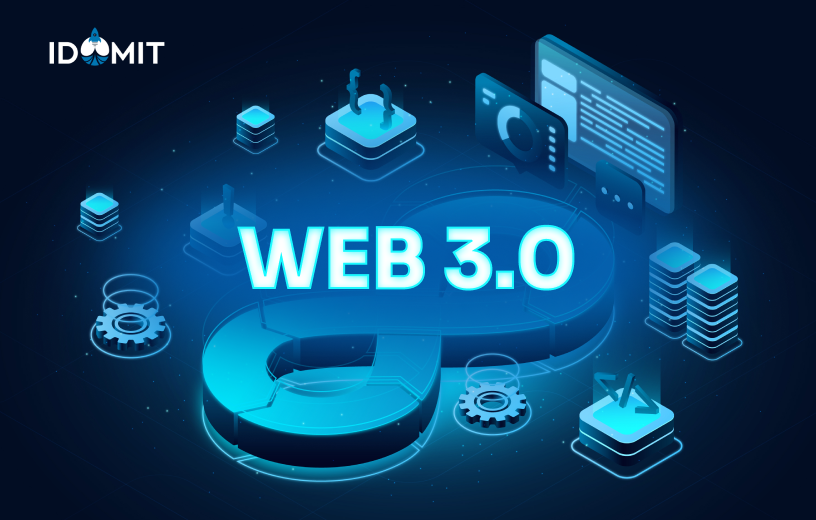What is Web 3.0 ? Meaning, Evolution of Web, Features, Characteristics, Applications
What is Web 3.0
Web 3.0 is a possible future version of Internet which will revolutionize everything. It represents the next generation of Internet, one that promoted decentralized protocols. Web3 is still in development and it may take few years for being usable.
In this article We Will discuss, Evolution of Web, features of Web 3.0, How Web 3.0 Works, Web 3.0 Characteristics , Web 3.0 Applications
The evolution of Web :
Web has evolved a lot over the years. Let’s first understand what Web1 and Web2 are.
Web 1.0 : Web 1.0 was first iteration of Web. In simple term, it was called as ‘ read only ‘ web. User can see and download information from webpages, but they can’t do anything else. Web 1.0 existed from 1990 to 2004. Main purpose of Web 1.0 was to improve current web infrastructure.
Web 2.0 : Web 2 was next phase was internet. It was called as ‘ read-write ‘ internet. Web2 is the era of Social media and companies started providing platforms to share user-generated content and engage in user interactions. However, most of the activities are controlled by big companies. Today if we search anything on google, we start seeing ads related to that particular product/service. So our data is being controlled by such big companies. In web 2.0, you don’t have control over your data and many businesses track and use our data without permission to generate more revenue.
Web 3.0 : Web3 is a web that’s not controlled by a small number of authorities but Web3 puts user data and web content into users’ hands. Web 3.0 allows users to take benefit directly from their data.
Data Distribution is done well in Web 3.0 around nodes and no one can solely manipulate the data as it is operated by users collectively, rather than a corporation.
Web 3.0 Features :
Decentralized : In the first two generations, governance and applications were largely centralized, where Web 3.0 will be decentralized. Applications and services will be enabled in a distributed approach, where there isn’t a central authority.
Artificial Intelligence : Another key feature of Web 3.0 is the “infusion” of Artificial Intelligence in the process in which the Internet replicates how humans access information. This version would enable faster validation and delivery of information to the users.
3D Graphics : 3D designs are used all different Web applications.
How Web 3.0 Works :
- Web 3.0 is built on a blockchain technology which are group of computers that are powering the network from around the world.
- Blockchain host decentralised applications which are programmed with smart contracts (basically just a program saved on the blockchain) which allows the interactivity within it.
- Final layer of Web 3.0 is the front-end website that interacts with the smart contract.
Web 3.0 characteristics :
- Self-governed : Web 3.0 is not governed by any private companies.
- Permissionless : ‘Permissionless’ in that anyone, both users and suppliers, can participate without authorisation from a governing body.
- Trustless : Smart contacts’ scripts are generally fixed and immutable which means that users will exactly know what they will get from the transaction they are performing in Web 3.0. It provides transparency for all the transactions made.
- Private and Secure : With blockchain technology the web 3.0 provide strong data security & privacy. Web 3.0 is built on a peer-to-peer network which is really difficult to hack.
- Interactive : Traditional websites have Artificial Intelligence and well-developed algorithms. Web 3.0 is taking interactivity level to another level by suggesting the users content based on their browsing history. This helps web owner get more users connected to their web apps.
- Transparent : Given the web 3.0 are recorded on the Blockchain, this means that everything is transparent and it’s hard to do “special treatment” for certain users without everyone knowing.
Web 3.0 Applications :
Blockchain : Blockchain technology is a record of information organized in blocks in a peer-to-peer network. Blockchain is designed to be a state machine that anyone in the world can access and write to. As a result, this machine isn’t owned by any single entity — but collectively by everyone in the network.
Non-Fungible Tokens : NFTs are becoming one of the fastest growing asset classes of the year. This is the most powerful use case of Web 3.0. It allows the artists to offer digital originals and own the rights without relying on any middlemen. This helps the owner of digital property earn royalty.
Smart Contracts : Smart contracts are hosted and executed on a blockchain network. Smart Contracts are basically codes which specify the conditions. When such conditions met through web user, trigger outcomes.
Initial Coin offerings : When any company looking for expansion of Business, they required additional capital and raise funds from outside. Initial Coin Offerings are a way for entities to raise a capital from potential investors by offering them digital tokens.
Decentralised apps : Decentralized applications can be designed for several real-world use cases. Back-end processes differ than web application.
Web 3.0 will bring a revolution in Internet era with complete control over data and privacy.
